Is my content answering too many search intents?
Will my SEO suffer if my page ranks for many different keywords and search intent intents?
Sounds familiar?
Today, we are going to speak about search intent optimization and:
- How to identify a page ranking for several search intents and
- How to optimize your page for several search intents
This article will share the essential steps to achieve successful search intent optimization.
Additionally, we will present practical case studies to help you begin your content optimization journey.
Table of Contents
What is Search Intent?
When a person uses a search engine to look for anything, his objective is known as search intent.
For instance, does the user like to visit a website immediately, buy something, or learn something?
This is search intent.
💡 Please Note: We assumed that you are already familiar with the concept of search intent. If this is not the case, you can read our guide about search intent.
In the following article, we will discuss advanced concepts such as how to optimize a page ranking for too many user intents.
Let’s begin by understanding the difference between keywords and search intents before we dive into the steps for optimizing search intent.
Keywords vs. Search Intents
Indeed, it is important to understand that a group of keywords can answer the same user intent.

Users search with different keywords leading to a same search engine result page (SERP).
This is how user search intent is usually determined in SEO, based on the result of the SERP.
By checking the results of the first page of Google, you can guess why and what somebody is searching for:
- Is he looking to learn something?
- Is he looking to buy something?
- Does he want to visit a specific website?
Not clear yet? Let’s review some examples of the main search intents.
Example of Information Intent
The SERP Features, Answer Box followed by People Also Asked, and then a listing of blog posts and guides show that the user is searching for information.
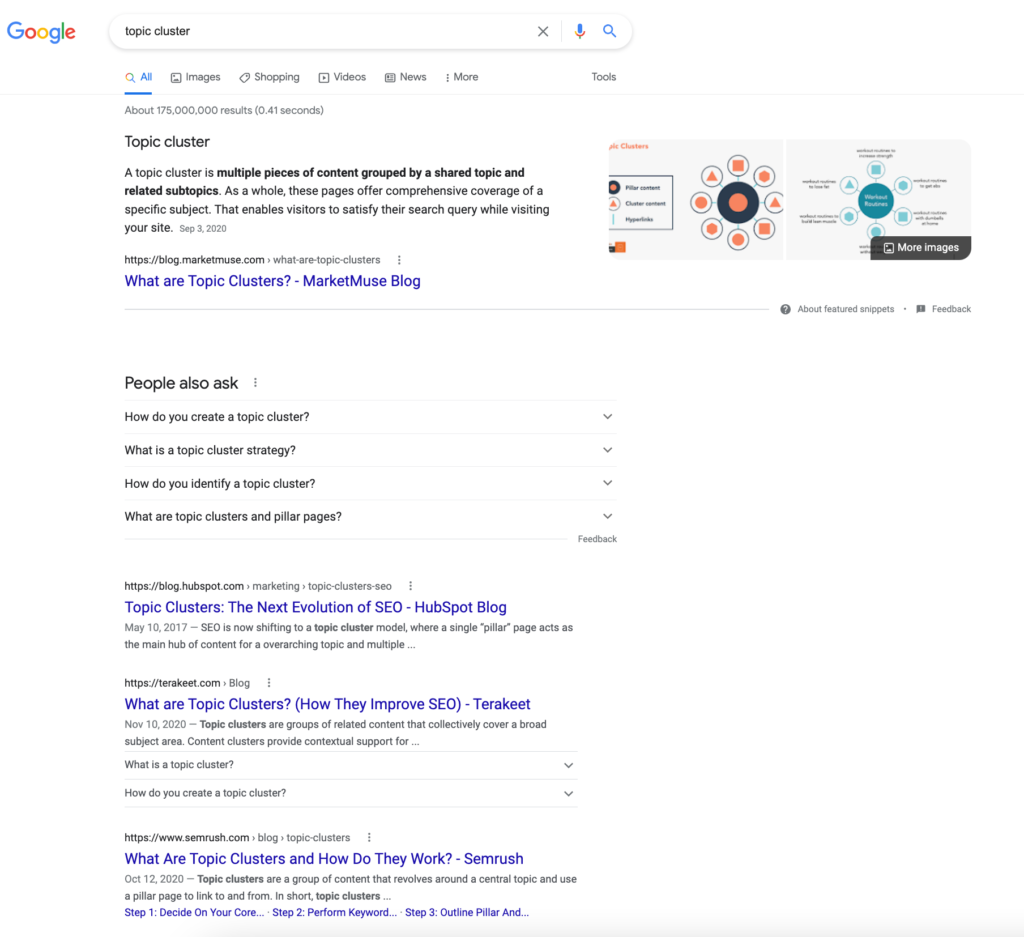
Example of Navigational Intent
Typing a brand to navigate to its website.
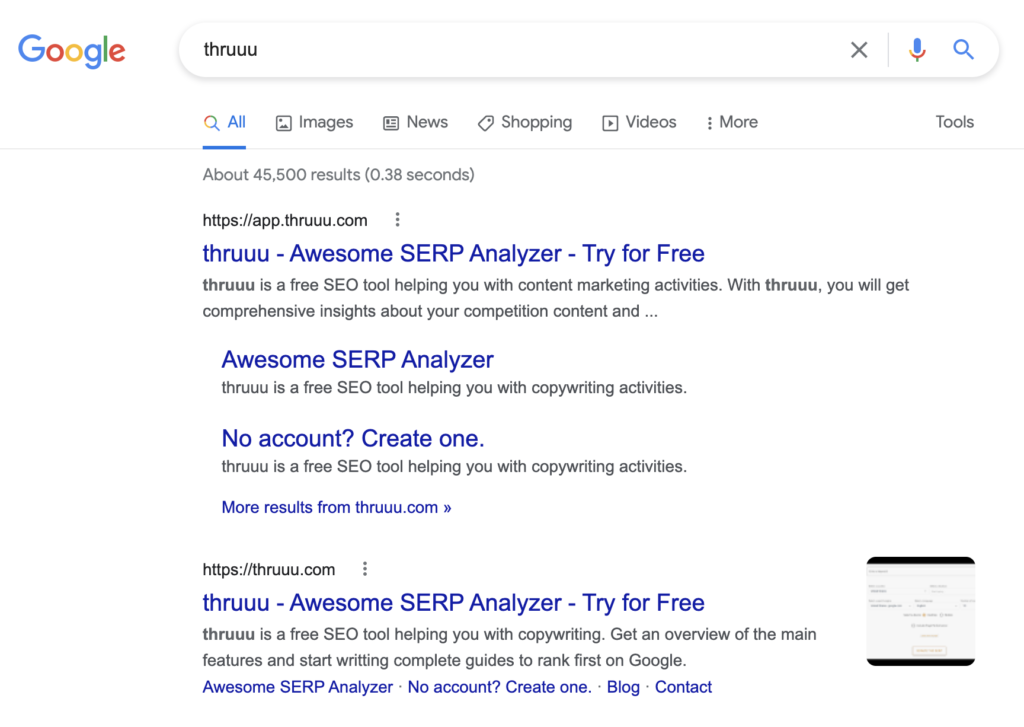
Example of Commercial Intent
This person is currently in the market for a new CMS and is actively comparing the best ones. Their intention is commercial and they are likely to make a purchase soon.
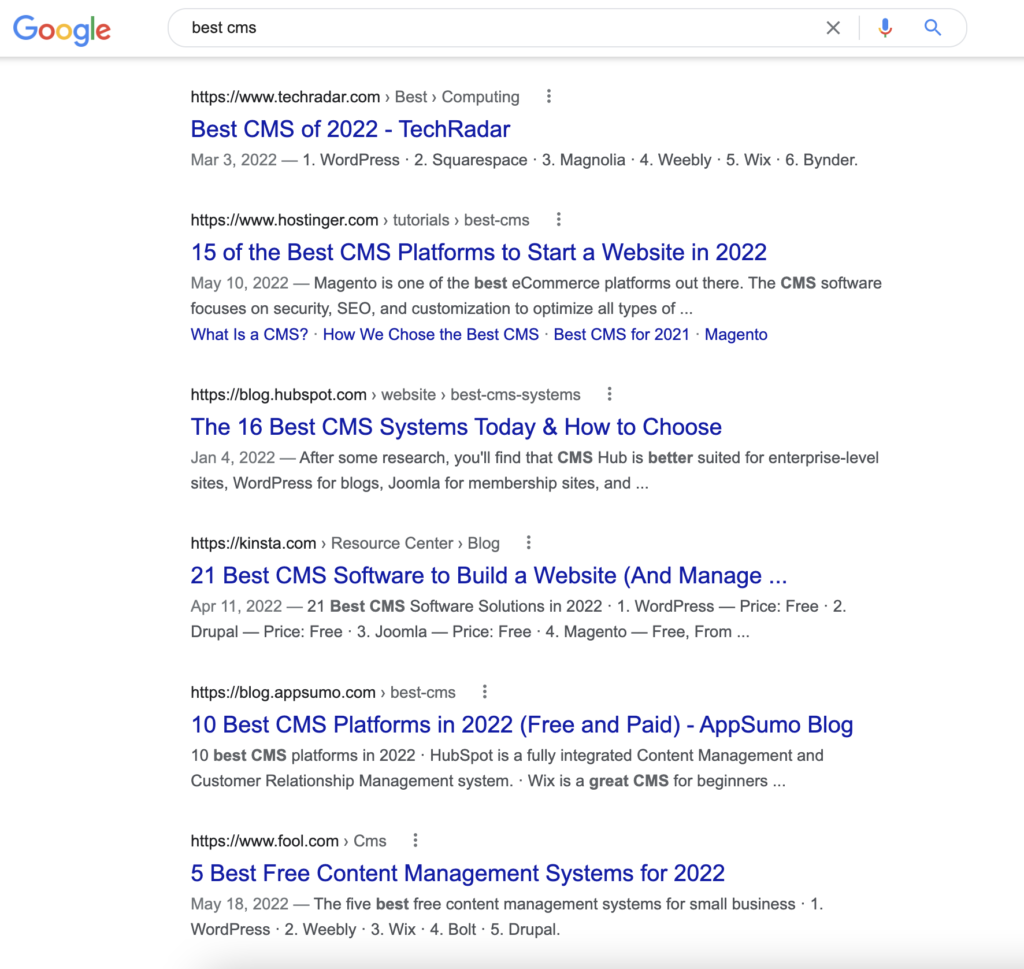
Example of Transactional Intent
The SERP displays many ads and e-commerce websites. The searcher’s intent is transactional; he or she is looking for new shoes.
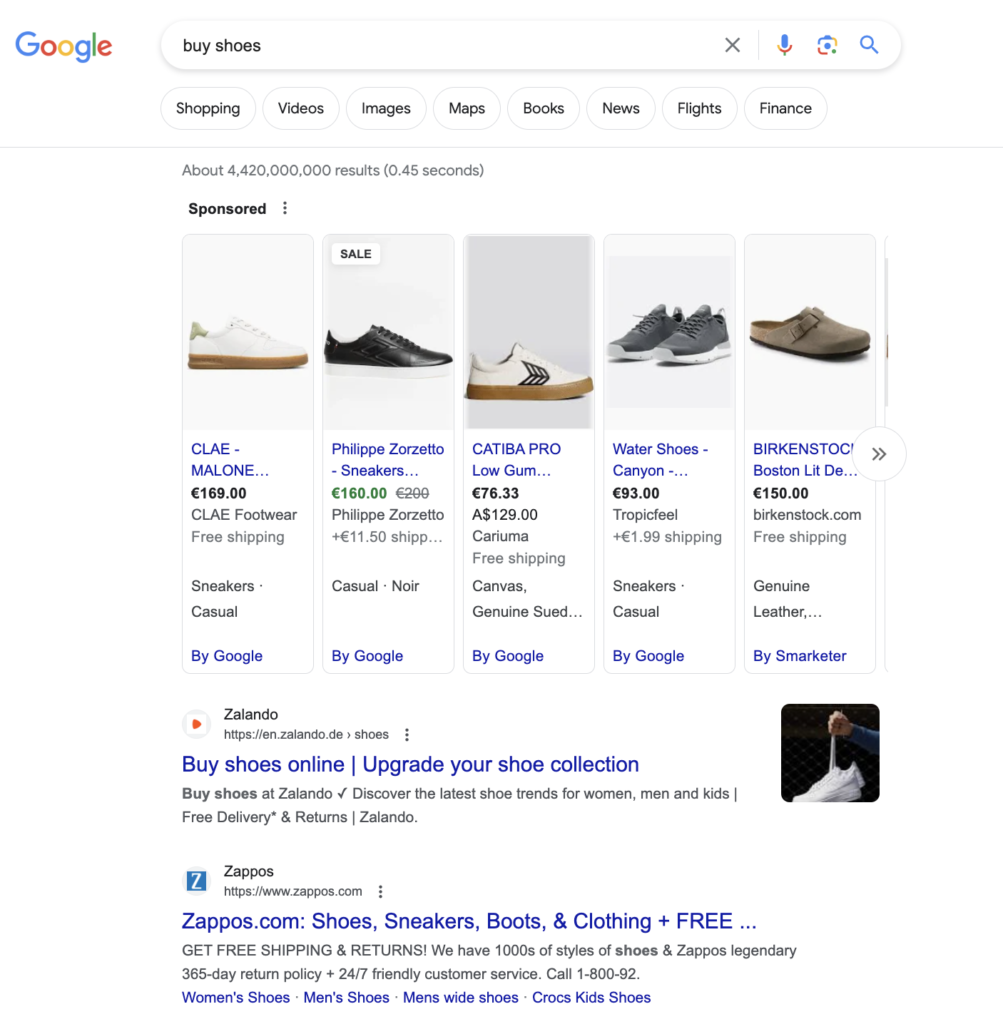
In a nutshell, you must understand the difference between keywords and search intent for the rest of the article.
By the way, one keyword can also lead to several intents (e.g. Apple).
But we won’t go into the details of search intent and fragmented SERP in this article. But if you like to explore this topic, visit our detailed guide about search intent.
💡Remember: A group of similar keywords could lead to the same user intent.
How to analyze search intent
Our goal is to analyze search intent related to a single page. We want to know if a page answers many search intents.
Why?
A page covering multiple topics (and answering many search intent) may not rank well in search results as it competes with more focused content.
To identify if a page is answering several intents, the best thing to do is to understand if this page is ranking for multiple “different” SERPs.
“Different” means that SERPs have nothing in common: zero or very few similar URLs ranking in the top 10.
If you put two SERPs side by side, they will show limited similarity. The SERPs are “different”.
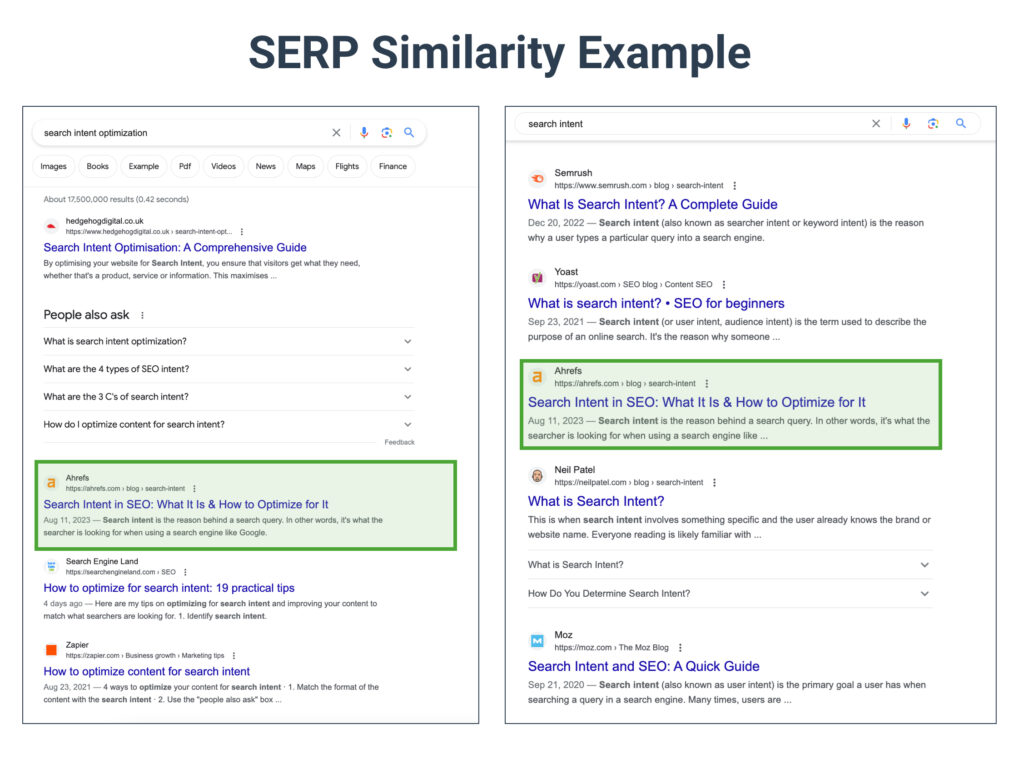
Note: The example above shows two SERPs one about “search intent” and the other “search intent optimization“. Even though the two terms are closed, they only share one URL in common. The first search is about understanding the concept while the second is about getting practical steps.
So, how do you identify if a page is ranking for several intents?
The best way to do this is to leverage keyword clustering.
Keyword clustering is the process of grouping keywords based on similar SERPs, which we can also refer to as SERP Similarity.
In our case, the approach will be to cluster keywords related to your website and identify pages ranking for multiple clusters.
You can use a keyword clustering tool like thruuu.
Enter a bunch of keywords and then explore the keyword clusters.
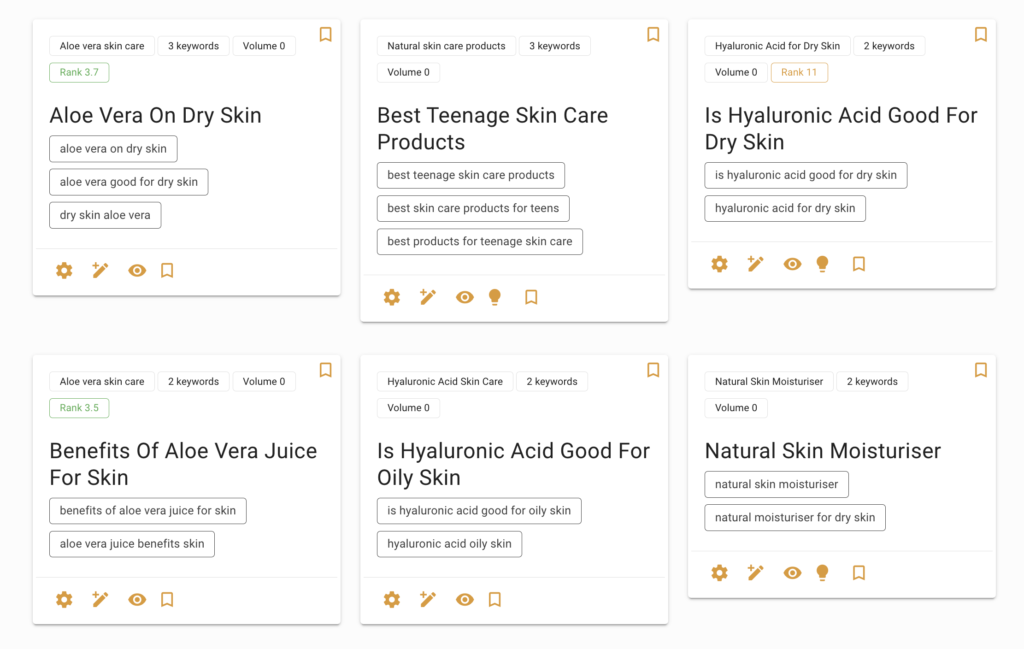
thruuu can help you determine if a page is ranking for several intents or multiple clusters, and here are the steps to follow.
Step 1: Extract keywords related to your website
Gather a list of keywords related to your website or a specific article. The best tool is Google Search Console for this.
You can also apply a filter directly from GSC on a specific page.
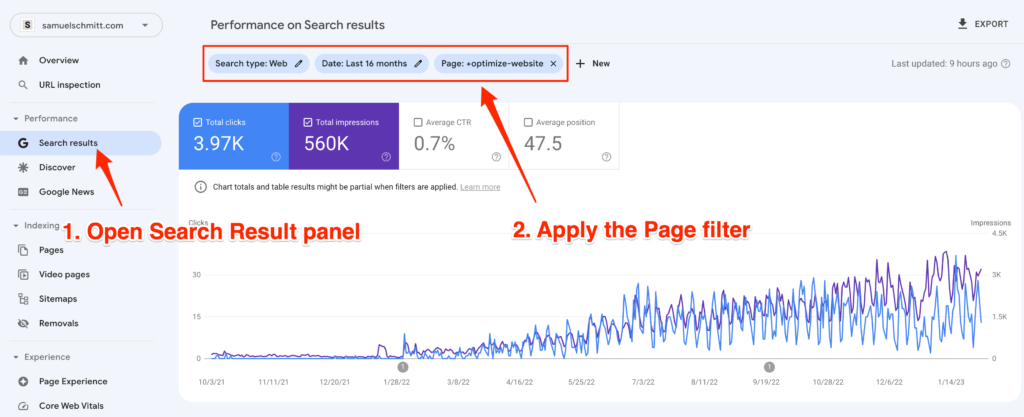
Step 2: Use thruuu keyword clustering tool
Upload the extracted keywords into the thruuu keyword clustering tool, enter your domain name (really important), and start the process.
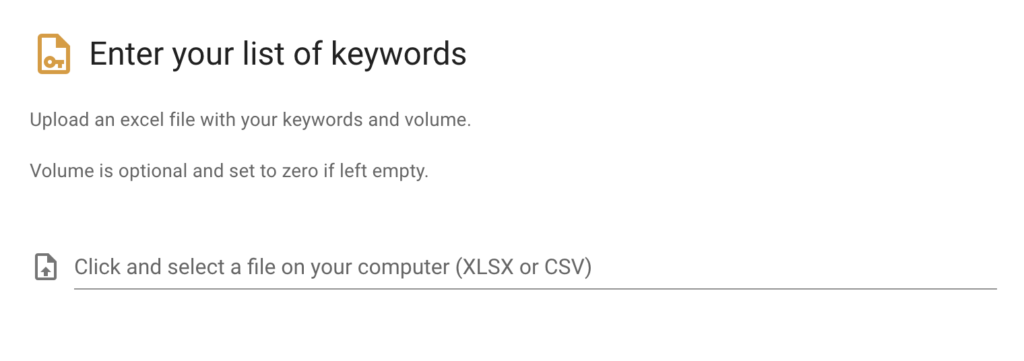
Note: thruuu is grouping keywords showing 4+ URLs in common in the top 10 of Google.
Step 3: Analyze your pages cluster distribution
thruuu offers a unique feature. It shows the pages of your website and the clusters they are ranking for.
Open the “Pages” report of the keyword cluster tool to get a view like this.

This report displays the following information:
- Pages and their corresponding URLs
- The clusters in which these pages are ranking
- The average ranking position for all keywords within the cluster
Now you can review the distribution of clusters across your website to see if your articles are focused on one specific intent or cover multiple intents.
Remember: One cluster is a group of keywords showing the same SERP, meaning the same search intent.
Step 4: Identify opportunities for improvement
Look for articles that rank for multiple clusters/intent/topics and assess whether splitting them into separate, more focused articles would be beneficial.
We will discuss strategies to improve your content very soon.
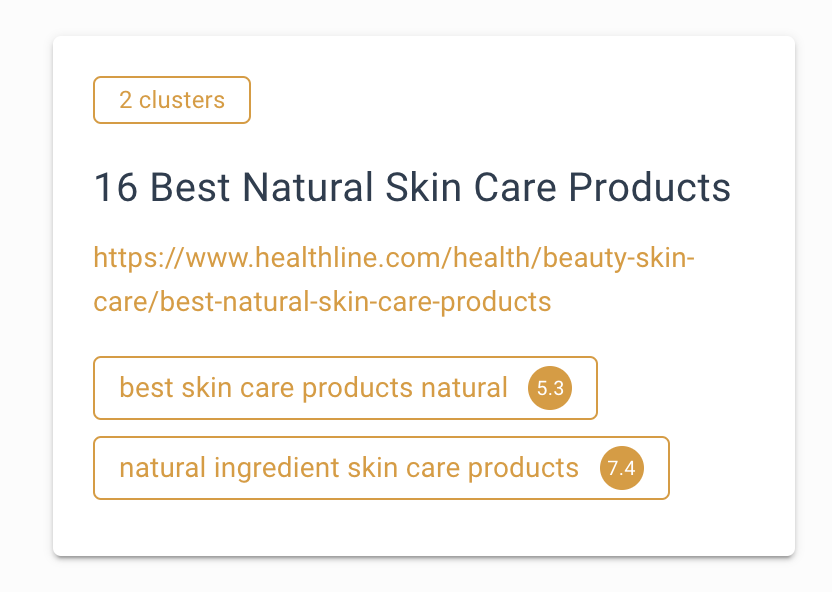
Before we continue, let’s take a moment to discuss whether it is “good or bad” for an article to rank for multiple intents.
Can an article’s ranking for multiple intents impact my SEO?
In this article from Barry Schwartz, John Mueller from Google explained the challenge of mixed content intents within webpages. He explained that it can confuse Google Search on the page level.

Imagine stepping into Google Search’s shoes for a moment.
Consider this scenario: We have an article discussing three types of tomatoes – Cherry, Roma, and Beefsteak.
When someone searches for “Cherry Tomatoes“, Google might prioritize articles focused solely on that type of tomato, potentially pushing our article to a later position in the SERP (or even not showing our article for this search).
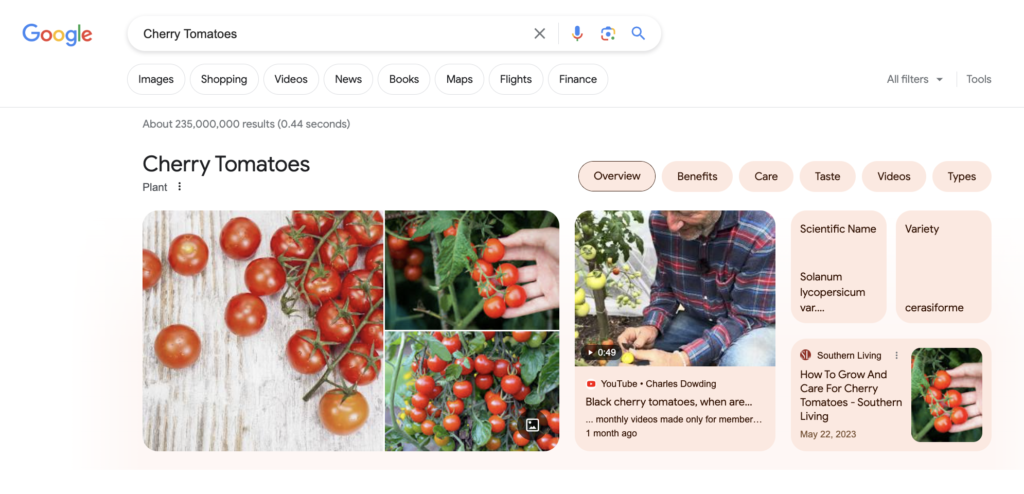
Now, if someone searches for “Types of Tomatoes” we might have a better chance of ranking in the first positions.
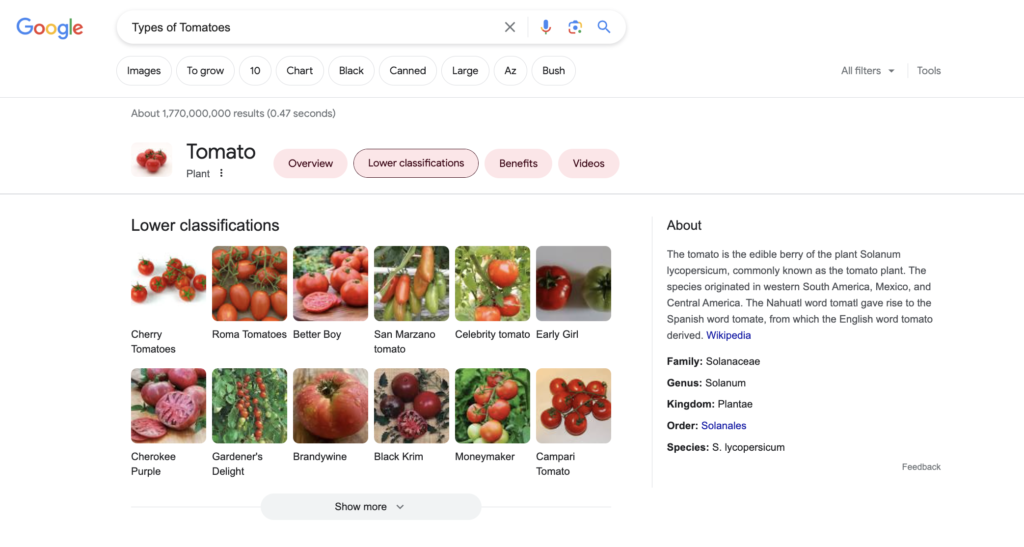
The key point is that our article could rank for multiple intents or kinds of searches, but it won’t be on the first page for specific tomato types.
In our example, all three searches were intended for information.
However, mixing informational and transactional searches on a single content could be even more confusing for Google.
In essence, mixed intent appears problematic when found within a single piece of content and could lead to SEO issues:
- Confusion or dilution of the content’s central focus
- Complexity in search engines comprehending the primary intent of the page
- Possibility of ranking for multiple intents, potentially at the cost of diminishing the page’s primary focus
If your article isn’t ranking in the top 3 for every intent, it’s important to consider improving the situation. Here are some strategies to help with that.
Strategies to optimize your page for search intents
Now that we have identified pages ranking for multiple search intents, let’s figure out how to improve them.
Step 1: Analyze cluster content, competitors, and search intent
The first thing to do is to perform a content analysis of each cluster’s top-ranking page and understand your competitor’s focus.
Content and competitor analysis will help us define each cluster’s search intents.
thruuu keywords clustering feature is very handy to perform such cluster/content analysis.
The tool creates an aggregated view of several SERPs for each cluster and the set of keywords within it.
This view shows you, on average, what web page ranks in the top 20 of Google for a set of keywords.
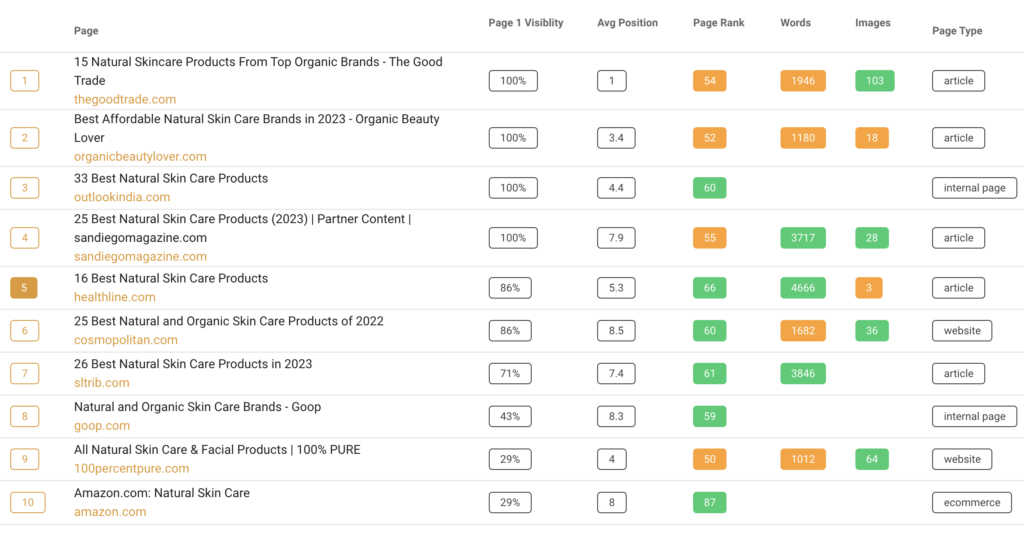
Also, thruuu extracts on-page data and reports the most frequent terms used, the headings structure, the most frequent questions, and even more.
By examining what your competitors are offering to searchers, you can obtain all the information you need to perform accurate content analysis and understand the search intent.
At this step, you should have understood several search intents from the cluster analysis.
You should know what your audience is looking for and what information could be displayed per search. Additionally, you might even know (now) what kind of content format works best.
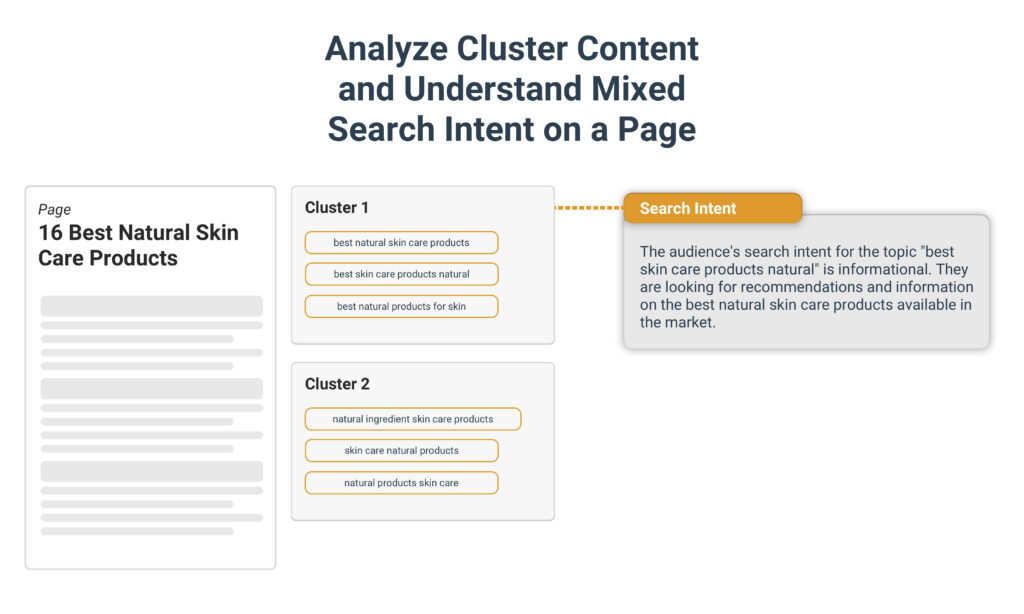
Let’s move to the next step.
Step 2: Optimize your page for many search intents or create a new one
Thanks to the previous analysis, you have identified the various search intents.
For each search intent identified, you will have to update your content.
And here, there are three options:
- Option 1: Optimize the current page
If you figure out that the intents are “closed” enough and that a few tweaks on your page could improve the situation, the best is to update it.
Tweaks could be adding a new section (H2) focused on a specific intent or improving the headings structure to align with the searchers’ queries.
- Option 2: Optimize the next closest page
There might be another page on our website that could better optimize for this search intent. Maybe because the page is closely aligned with the expected format and the tweaks to make are simpler.
To find the next closest page ranking for an intent, do the following:
Open Google and search for “site:<your-domain> <Main keyword of the cluster>”

You will see a list of pages that could rank for this keyword. The first one must be your current page; check the numbers 2 and 3 to understand if you could improve them and make them rank first for this intent.
- Option 3: Split articles into a topic cluster and create focused pages
It might be the most straightforward option: split the article that covers multiple topics into separate pages, each focusing on a specific topic and search intent to finally create a topic cluster.
I’ve already explained this strategy in this guide about creating topic clusters by splitting an article.
In a nutshell, the initial article will become your pillar page, and you need to develop content for each new subpage/cluster page, ensuring it addresses the search intent behind the specific topic.
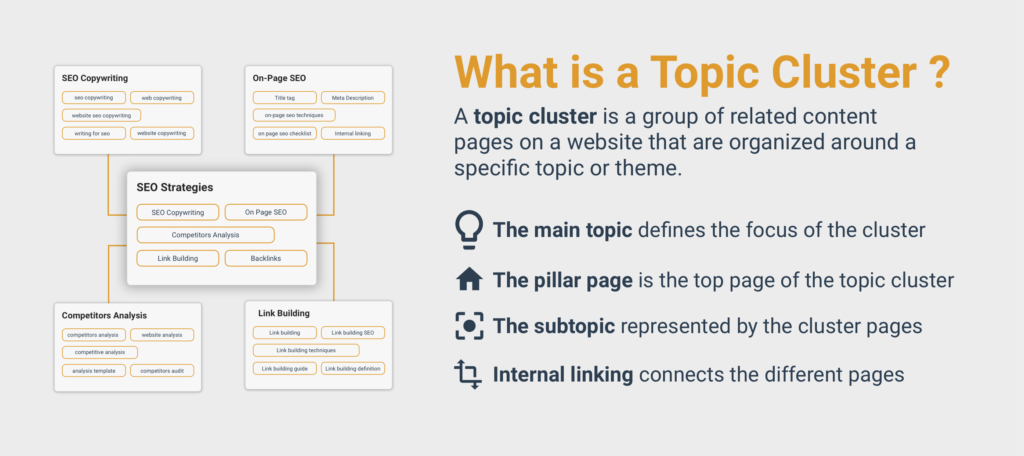
Well. That was a bit theoretical.
As this SEO concept of search intent optimization is not the most trivial, it could deserve some practical examples.
Let’s review the following case studies showing how to put into practice the search intent optimization steps introduced.
Case study #1: Ahrefs and the Free SERP Checker Landing Page
You might be familiar with Ahrefs. It is an All-in-one SEO toolset offering keywords analysis and more.
Ahrefs has a landing page about a Free SERP Checker ranking very well for several keywords (and clusters) about “SERP Tool“, “SERP Analysis tools” and so on.
The image below shows the topic clusters analysis of thruuu and the “Pages” report.
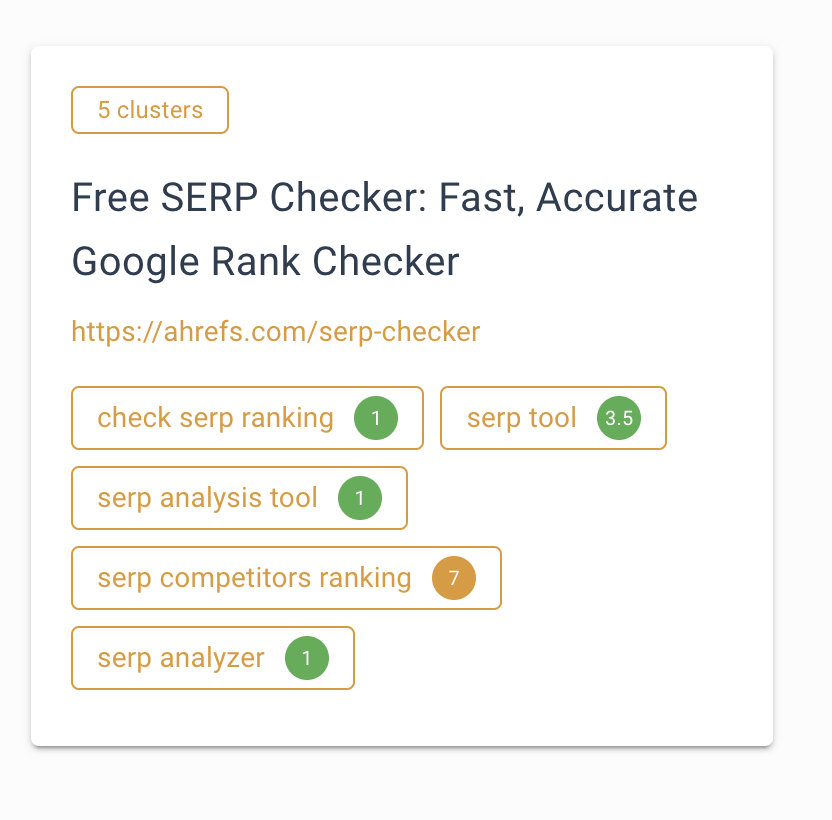
As you can see, for the cluster “SERP competitors ranking” they only rank at position 7.
Note: They rank on average at position 7 for this cluster, which means for a set of keywords included in this cluster.
But now we could ask ourselves: When someone searches for “SERP Competitor ranking“, does he expects to visit a landing page about a tool?
Intent Analysis for “SERP competitors ranking”
When we open the cluster analysis, we figure out what people are looking for from the analysis of the top-ranking pages.
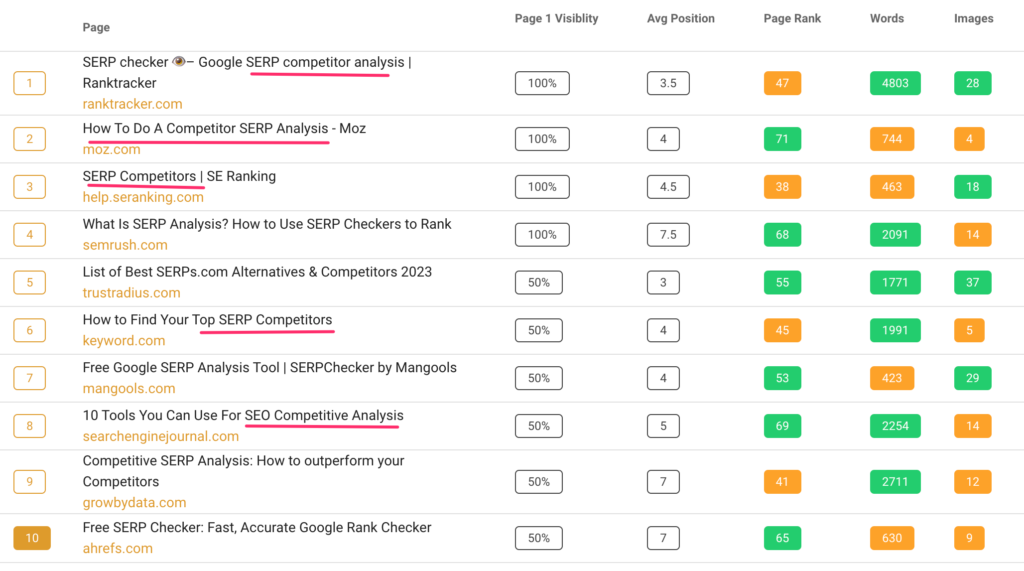
People searching for “SERP Competitors ranking” want to know:
- Who are their competitors on the SERP, their ranking
- and how to perform a competitor analysis
How-to guides have prominent spots in this search.
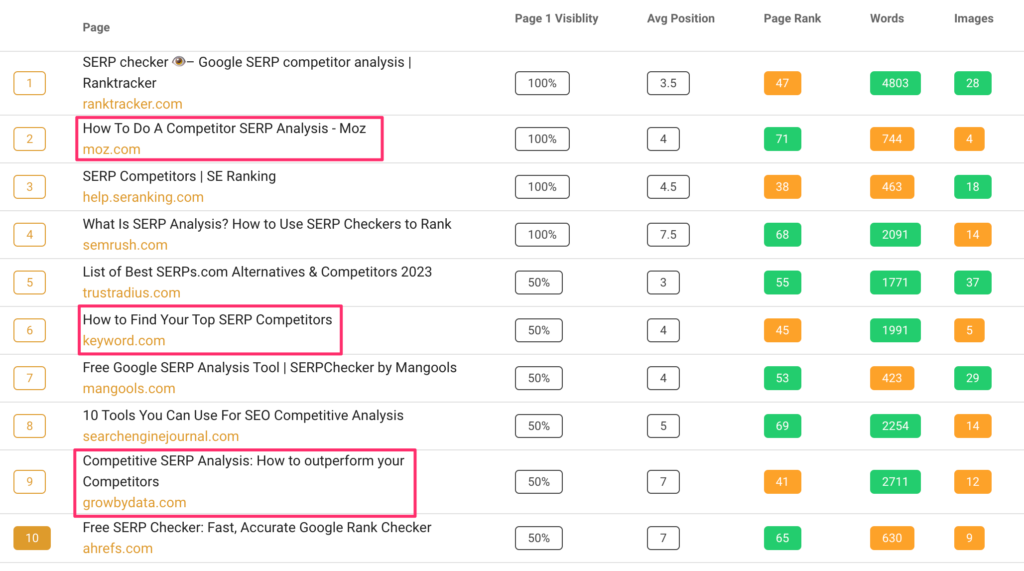
And here is what the intent analysis of thruuu is telling us:
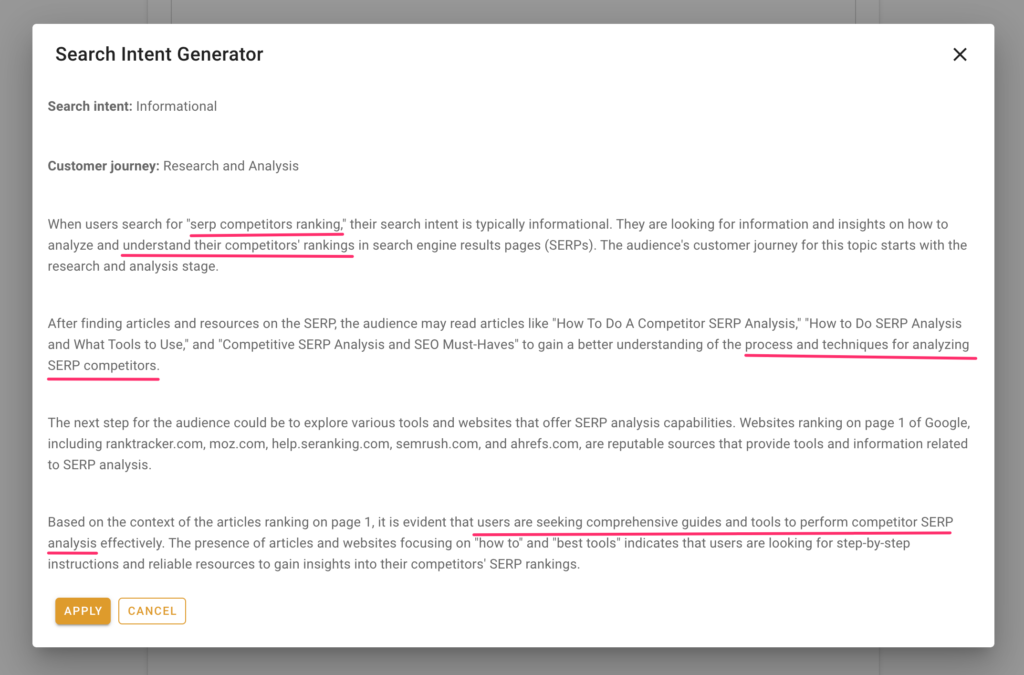
So maybe we could improve the content of Ahrefs.
Analysing Ahrefs content
Based on the steps defined previously, we now have several options.
a) Optimizing the landing page for this term
I won’t go for this approach, as I don’t think a landing page is the best answer for someone searching for “SERP Competitor ranking“.
In fact, we should even de-optimize the landing page for this term and either create a new page or optimize an existing one that could overtake the spot on Google.
b) Finding and optimizing the “next closest page” to this intent
If you search for “site:ahrefs(dot)com SERP competitors ranking” you will see a list of pages.
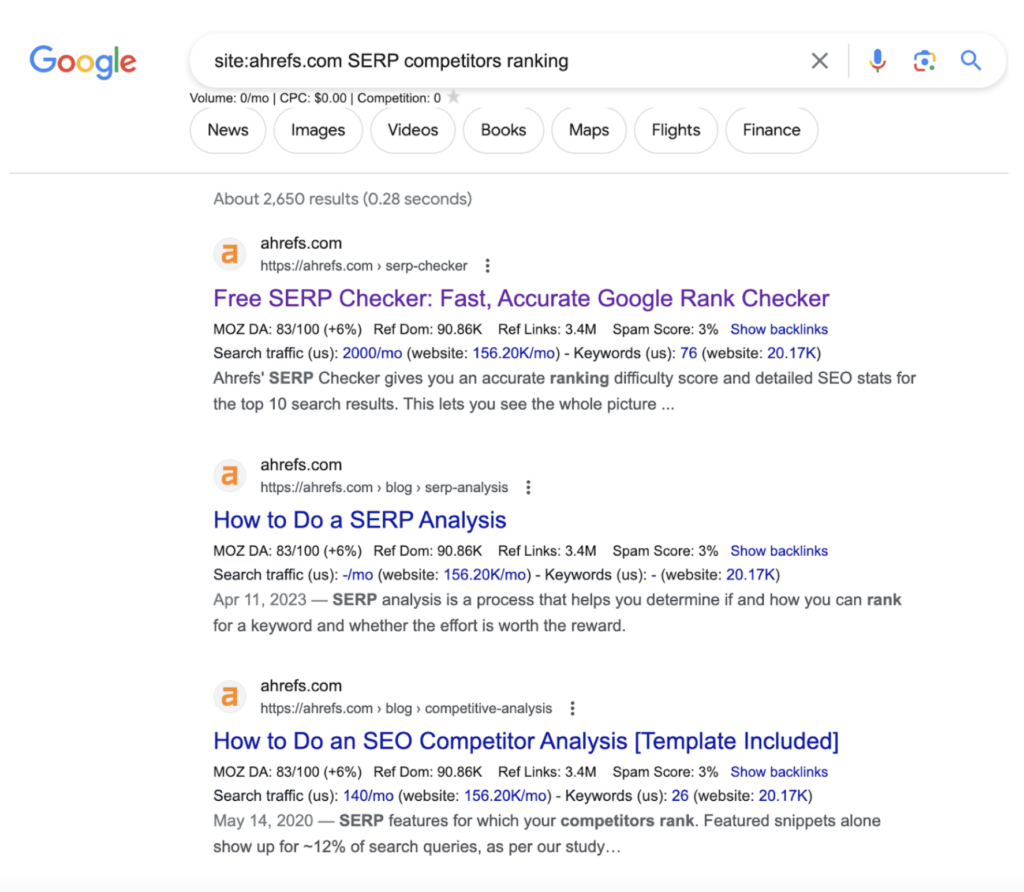
The first one is obviously our “Free SERP Checker” followed by “How to do SERP Analysis” and “How to do Competitor Analysis”.
The last two are good candidates to be updated and optimized for the search about “SERP competitors ranking.”
c) Creating a new article
The last option is creating a new article optimized for “SERP competitors ranking“.
But as we see previously, Ahrefs already has two articles that could answer this intent, so I won’t create a new one as it might be too close to the one already existing.
How Ahrefs can optimize its content
You understand that my recommendation will be option 2: Optimizing one of both “How to” pages for the term “SERP competitors ranking” while de-optimizing the landing page.
Again, a deeper SERP analysis will be required to see which page could be the best candidate and what new information could be required to make it closer to the search intent.
Also, some smart internal linking between the landing page and the how-to guides might be needed.
Case study #2: Actito and the Black Friday vs. Cyber Monday campaigns
Acticto is a marketing automation solution, and on their blog, you can find a page about Black Friday and Cyber Monday.
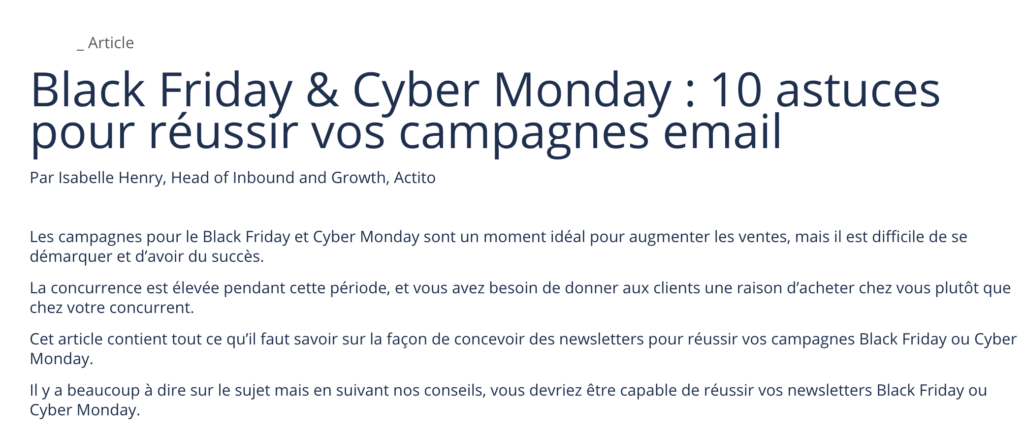
This page has been created to answer questions from marketers and provide emailing tips for the Black Friday season (including Cyber Monday).
You get the following result by extracting keywords driving traffic to this page and clustering them with thruuu.
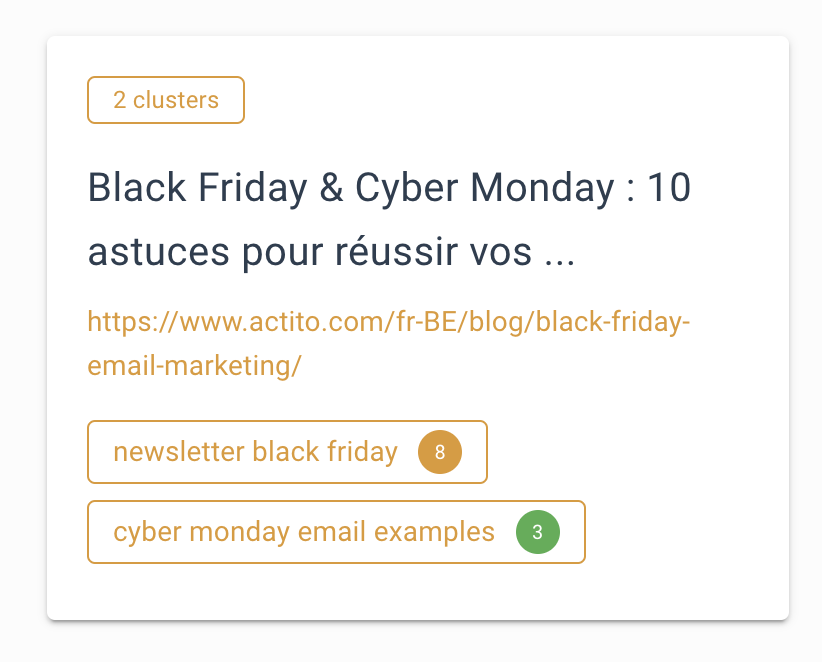
You should be familiar with this report now and understand that the page ranks for two groups of keywords:
- Newsletter Black Friday
- Cyber Monday email examples
Search intent of Black Friday vs. Cyber Monday.
Let’s open the cluster analysis for both topics and see what we find.
For the Black Friday cluster, we can see that most of the page speaks only about Black Friday.
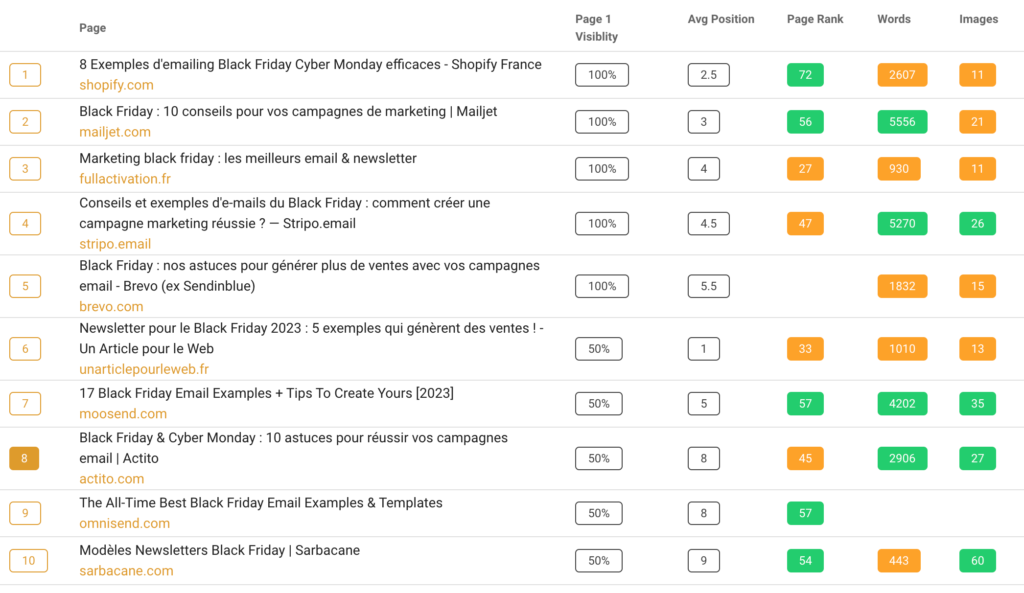
There is an exception with Shopify ranking number 1 and speaking about both topics. I guess that because their Domain Authority (Page Rank in thruuu) is that high, Google is less strict and allows mixed intent pages from authoritive domains to rank well.
But besides this, every other page speaks only about Black Friday. The term Cyber Monday is mentioned only by 4 pages in the top 10 as shown by the Topic Report from thruuu.

For the Cyber Monday page, it’s the same story. Pages focus solely on Cyber Monday. There are a few exceptions.
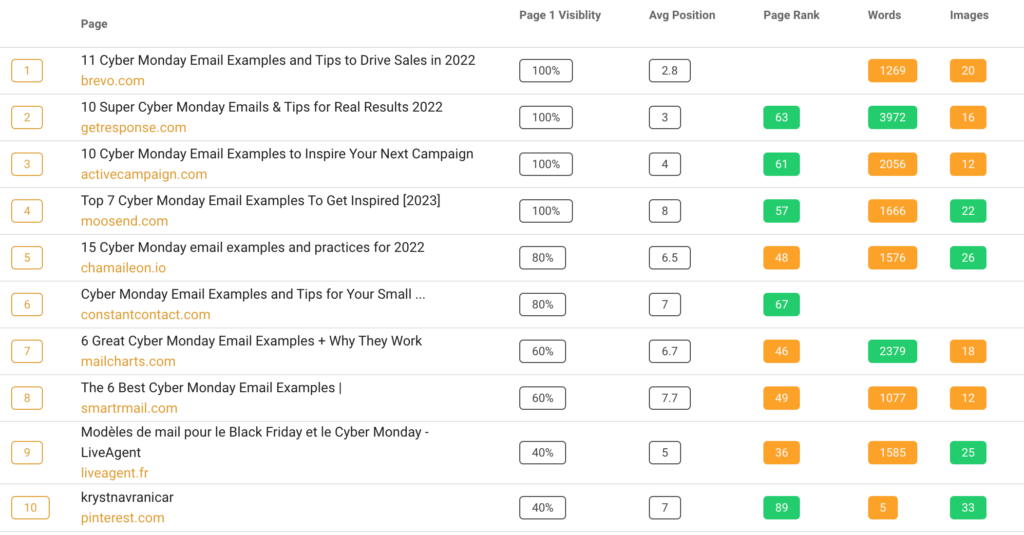
We could conclude our analysis by saying that competitors mainly focus on one specific topic.
So we could imagine people will never search for “Black Friday AND Cyber Monday email tips” They will either search for one or another.
Taking action to create more user intent-focused pages
I will discuss one option here and go straight to the point.
I will split the Black Friday & Cyber Monday article into separate pages.
I will keep the original page and focus it on Black Friday, including tips and marketing campaign strategies specifically for Black Friday.
And then create a dedicated page focused on Cyber Monday. It could follow the same template and discuss tips and strategies tailored for Cyber Monday.
Finally, I will adequately link both pages and add internal links from other pages.
You can watch me explain the case study of Actito in this video.
Real benefits come from showing the right intent on the SERP
Optimizing search intent can bring great results.
Steve Kang shared that focusing on the right keywords and topics on a page with great internal linking can give the right signals to search engines and boost traffic.
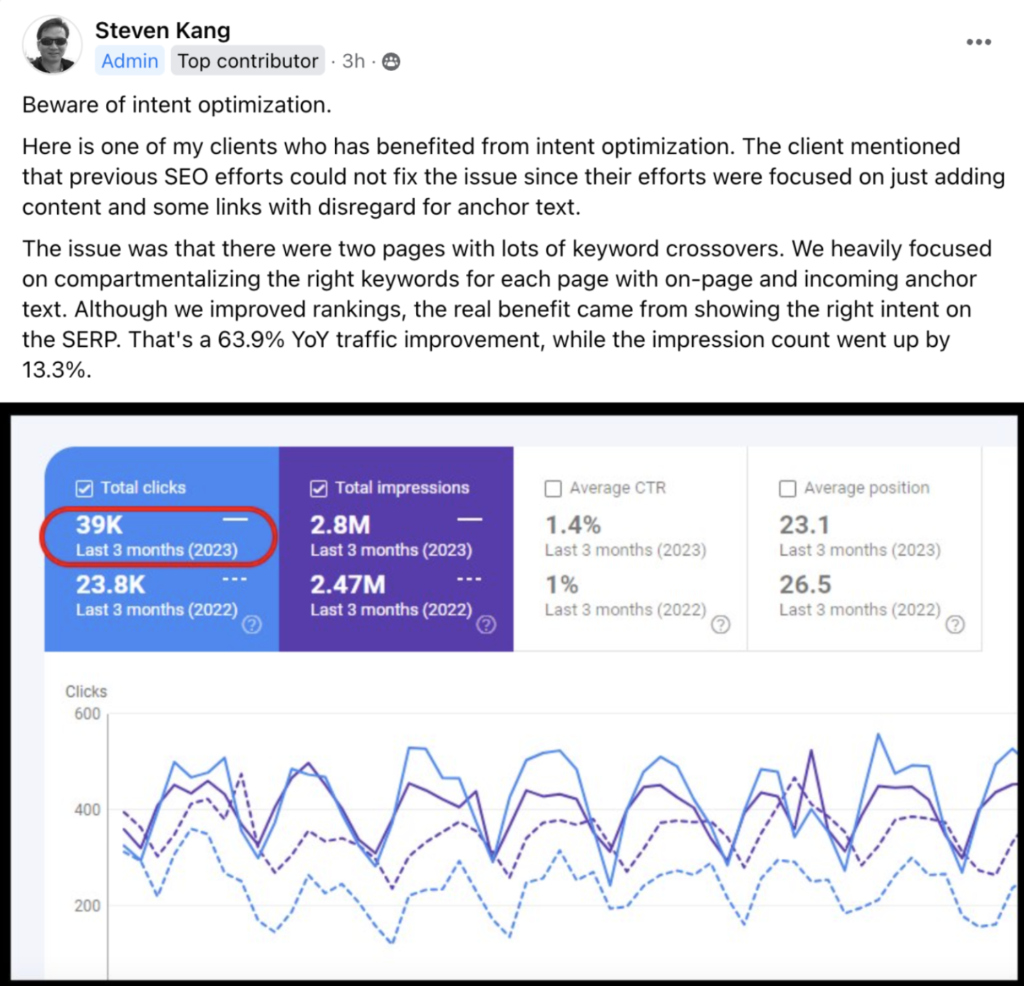
To succeed with intent optimization, you must be cautious and follow good practices.
You have to understand the nuance of search intent; it’s not only about “informational,” “commercial,” or “navigational.”
Search intent analysis is the exercise of understanding why people search, what pain points they have or solutions they are looking for, and finally, what they expect to see.
You need to understand when one of your content offers too much information and might answer too many intents, leading to confusing Google (and readers who might find your page hard to read, not on their point).
Perform SERP and competitor analysis to determine the critical topics to cover and the proper format to answer for a specific intent.
And finally, feel free to test and see what works the best.
Get Started and Cluster 500 Keywords for Free
Organize your content for improved SEO and user experience with our Keyword Clustering and Topic Clusters feature.
